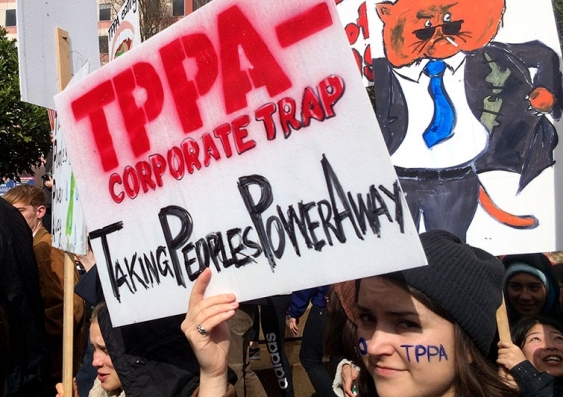Rescued TPP trade deal about more than economics

Australian Financial Review | 24 January 2018
Rescued TPP trade deal about more than economics
by Jacob Greber
Absent the United States, the economic gains of the renewed trans-Pacific trade deal are relatively modest.
But its resurrection represents a critical step towards building a trading system in which Washington’s abandonment of the region doesn’t immediately fall uncontested into China’s hands.
As Prime Minister Malcolm Turnbull said in an interview with The Australian Financial Review last week - ahead of his meeting with Japanese counterpart Shinzo Abe that helped catalyse the deal - this is about getting the "train moving... then you can add a few more carriages along the way".
The structure of the deal makes it possible to one day bring the US back into the fold, remote as that prospect may seem under Donald Trump, whose "America First" strategy saw him withdraw from the TPP a year ago.
"The agreement is structured so that the Americans can effectively... dock back in, which is obviously what everyone would hope for at some point in the future," Mr Turnbull said on Wednesday.
"Also, we look forward to other countries joining the TPP; Indonesia, Thailand, South Korea for example, have all expressed strong interest."
As the deal stands, the economic benefits are considerably reduced from the original plan, within which the US accounted for about 60 per cent of its value.
One estimate, by the respected Peterson Institute for International Economics in Washington, is that the deal without the US will boost incomes of members by $US147 billion between now and 2030, compared to $US492 billion had the US remained on board.
The original deal would have covered around 40 per cent of global gross domestic product - or $US28 trillion, whereas the new version covers 14 per cent of GDP. The market has also shrunk from 800 million people to less than 500 million people.
For Australia the agreement’s benefits are little changed without the US, but that’s because the existing free trade deal with America already provides access to the world’s biggest economy.
The same working paper released by the Peterson Institute last year showed the original TPP with the US would have boosted Australia’s national income by an estimated $19 billion – or 0.6 per cent – and lifted exports by another $37 billion by 2030.
Without the US, those numbers dip only slightly; national income would be 0.5 per cent higher and the export gain would be $29 billion.
But figures miss a critical point. The TPP, first mooted in 2005, gathered momentum when the US joined in 2008, with its participation representing an expression of US economic leadership in the global economy.
That leadership is arguably more urgently needed in 2018 than ever before. By signing onto the deal, the Asian members of the so-called TPP11 have made a clear commitment to a rules-based trade agreement, which include measures such as labour and human rights, environmental protections and dispute resolution mechanisms.
"We are firmly of the view that a free and open Indo-Pacific, open markets, free trade, the rule of law, encouraging investment and trade through our region is manifestly in our national interest and in the interests of all of the countries in the region," Mr Turnbull said.
"So we hope the TPP 11 becomes bigger over time."





